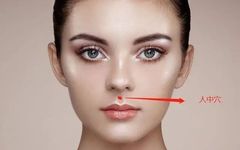Traditional Chinese Medicine Health Preservation  Before reading, please click the blue text above “Traditional Chinese Medicine Moxibustion Health Preservation“, then click “Follow” so you can receive the highest quality articles, completely free subscription, please feel assured to follow.
Before reading, please click the blue text above “Traditional Chinese Medicine Moxibustion Health Preservation“, then click “Follow” so you can receive the highest quality articles, completely free subscription, please feel assured to follow.
1. Ren Zhong = Emergency Qi Regulation Pill.Ren Zhong is a key acupuncture point for emergency fainting; pressing Ren Zhong can regulate blood and Qi, harmonizing Yin and Yang, allowing a person to regain consciousness. Ren Zhong (Ren Zhong) is located at the midpoint of the philtrum, at the junction of the upper third and lower third of the upper lip groove. It is used to treat epilepsy, stroke coma, and pediatric convulsions.
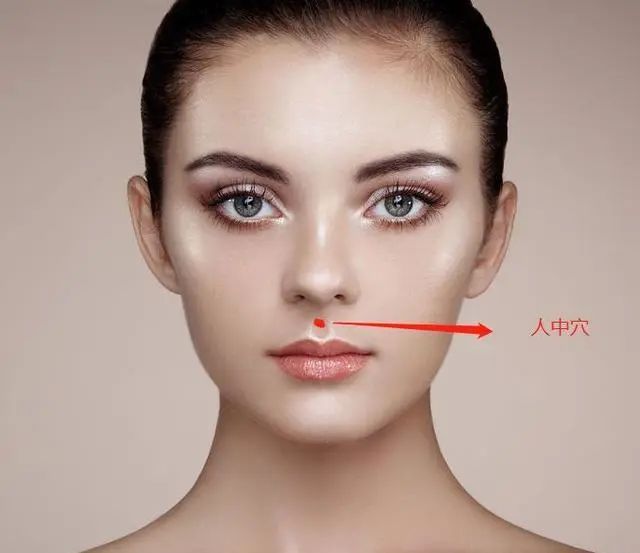
2. Ying Xiang + Kong Zui = Effective Nosebleed Stopper.If there is bleeding from the left nostril, press the left Ying Xiang (Ying Xiang) point with the left index finger, and press the Kong Zui (Kong Zui) point on the midpoint of the left arm with the right thumb, while raising the head; bleeding should stop within 1-3 minutes. If the right nostril is bleeding, do the opposite. Ying Xiang is located in the depression beside the nostril.
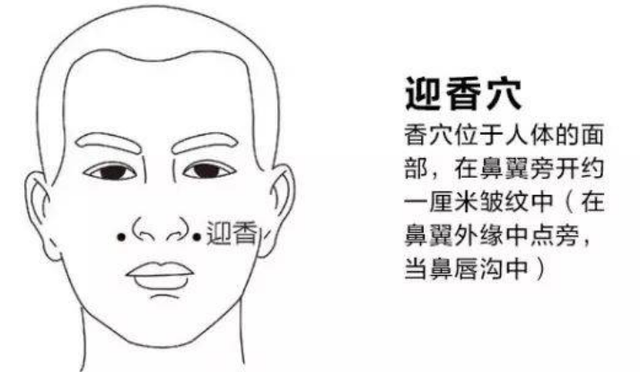
3. Feng Men + Kong Zui = Tong Xuan Li Fei San.Massage the Feng Men (Feng Men) point on the bladder meridian, combined with the Kong Zui point on the lung meridian (located on the radial side of the forearm, 7 cun above the wrist crease, on the line connecting the Shuizhong (Shuizhong) and Taiyuan (Taiyuan) points) = Tong Xuan Li Fei San. It is used to treat colds, coughs, fever, headaches, neck stiffness, and chest and back pain.
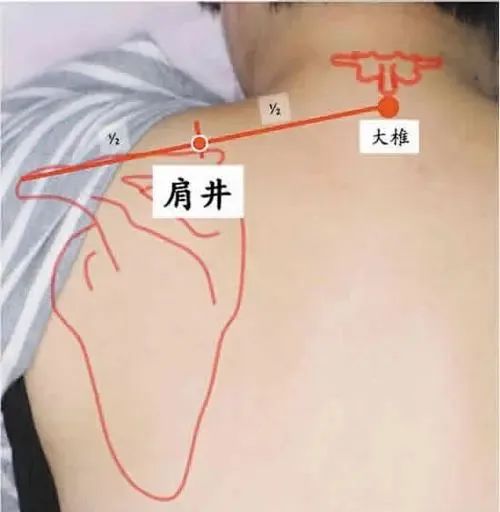
4. Jian Jing = Effective Point for Neck, Shoulder, and Lower Back Pain.Jian Jing (Jian Jing) is located at the midpoint between the Da Zhui (Da Zhui) point and the shoulder peak line. It is on the same line as the Yong Quan (Yong Quan) point on the foot. When experiencing discomfort in the neck and shoulders, you can use the method of pressing Jian Jing; place your thumb and four fingers opposite each other, press in the middle of the shoulder, and squeeze while lifting upwards to relax the shoulder and prevent neck and shoulder diseases. Jian Jing is located on the shoulder, at the midpoint of the line connecting the Da Zhui (Da Zhui) point and the shoulder peak.
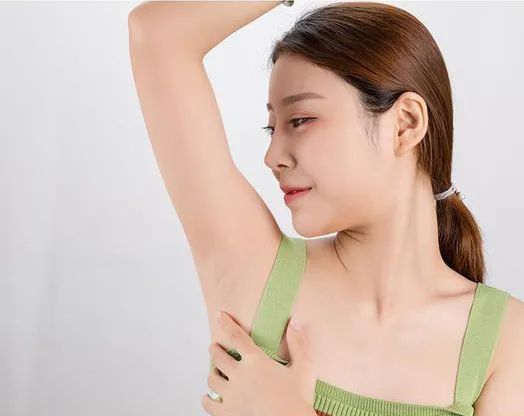
5. Ji Quan = Quick-Acting Heart Rescue Pill.Ji Quan is located at the apex of the armpit. Method: Use your finger to flick the tendon at the apex of the left armpit at the Ji Quan point; a sour and numb sensation will quickly radiate towards the hand, which can relieve heart discomfort within a few minutes. The best radiation is to the middle finger, but it can also radiate to the ring or little finger. If there is no numbness but only pain, there may be a 50% blockage in the coronary artery.

6. Zhong Fu = Bu Zhong Yi Qi Wan.The Zhong Fu point on the lung meridian is located on the lateral side of the chest, parallel to the first intercostal space, 6 cun from the anterior midline. This is the ‘house of central Qi’, where central Qi gathers, making it a key point for tonifying central Qi, used to treat Qi deficiency, abdominal distension, indigestion, edema, cough, etc.; the Tai Yuan (Tai Yuan) point is the source point of the lung meridian, and its nature belongs to earth, which can generate metal, thus its effect on tonifying central Qi is the strongest. Both massage and moxibustion are effective. Additionally, massaging the Tai Bai (Tai Bai), Shang Qiu (Shang Qiu), and Tai Chong (Tai Chong) points will also have a tonifying effect on central Qi.
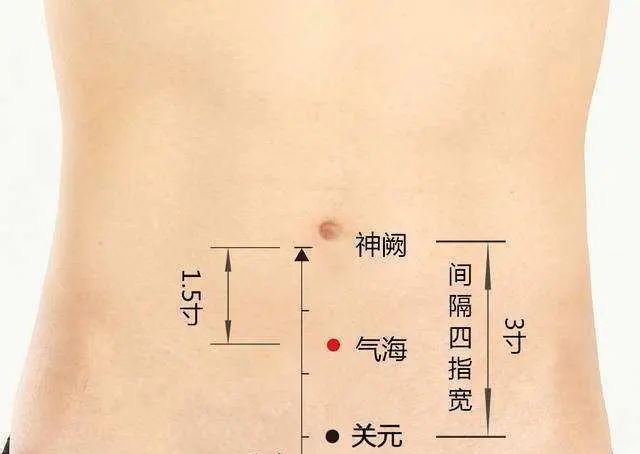
7. Qi Hai = Dang Shen.This point can tonify central Qi and generate fluids, treating spleen and stomach deficiency, Qi and blood deficiency, fatigue, poor appetite, thirst, chronic diarrhea, and prolapse of the rectum. Qi Hai is located 1.5 cun below the navel on the anterior midline.8. Ren Ying = Quick-Acting Blood Pressure Reducer.Ren Ying is located in the neck, beside the Adam’s apple, at the anterior edge of the sternocleidomastoid muscle, where the carotid artery pulsates. Press one side of the Ren Ying point for 10 seconds, pause for 10 seconds, then press for another 10 seconds, repeating three times, then switch sides (do not press both sides simultaneously). This is best used when there are no quick-acting heart rescue pills available. It can also be used for high blood pressure, reducing it by 6-10 mmHg each time.9. Chi Ze + Fu Liu = Mai Wei Di Huang Wan.Massage the Chi Ze (Chi Ze) point on the lung meridian and the Fu Liu (Fu Liu) point on the kidney meridian, which is equivalent to Mai Wei Di Huang Wan, having effects of moistening the lungs, nourishing Yin, clearing heart fire, regulating Qi, relieving asthma, and stopping cough. Chi Ze is located in the cubital crease, in the depression on the radial side of the biceps tendon; Fu Liu is located on the inner side of the lower leg, two finger widths above the inner ankle, between the tibia and the Achilles tendon (or 2 cun directly above the Tai Xi (Tai Xi) point, in front of the Achilles tendon).10. Bi He Yang + He Yang = Jing Tong Kang Pian, treating neck and shoulder pain.Bi He Yang is located 2-3 finger widths below the wrist crease on the inner side of the hand, if pressed correctly, the sour and numb sensation will radiate to the middle finger, effectively treating neck and shoulder pain.11. Da Ling = Ma Ding Ling.Da Ling is a key point on the spleen meridian, located at the midpoint of the wrist crease, between the palmaris longus tendon and the radial flexor tendon. Massaging Da Ling can borrow blood from the heart to aid digestion, increasing gastric motility, and has a spleen-strengthening effect. If you feel bloated after eating, massaging Da Ling can help with digestion; if you eat too much and feel short of breath, massaging the Gong Sun (Gong Sun) point can promote intestinal peristalsis.12. He Gu + Tai Chong = Chai Hu.Both sides of He Gu (He Gu) + both Tai Chong (Tai Chong), commonly known as the “Four Gates” combination, work together like Chai Hu, helping to soothe the liver, regulate Qi, and relieve stress. He Gu is also a pain relief point. He Gu is located at the midpoint of the second metacarpal bone, gripping the edge of the bone’s midpoint is the effective pain relief point, treating dysmenorrhea and toothache.13. Tai Yuan + Shang Qiu = Shen Ling Bai Zhu Wan.The Tai Yuan point on the lung meridian is located on the wrist crease, at the base of the thumb, treating cough, asthma, hemoptysis, chest pain, sore throat, wrist and arm pain, and pulse-less conditions; the Shang Qiu point on the spleen meridian is located in the depression just below the inner ankle, at the midpoint of the line connecting the navicular tuberosity and the tip of the inner ankle. It is used to treat abdominal distension, borborygmus, diarrhea, constipation, indigestion, ankle pain, neurogenic vomiting, acute and chronic gastritis, and enteritis. These two points used together can tonify the lungs and strengthen the spleen, acting as a free Shen Ling Bai Zhu Wan.14. Shen Men + Da Du = Niu Huang Qing Xin Wan.The Shen Men point on the heart meridian is located at the small finger end of the wrist crease. The Da Du point on the spleen meridian is located on the inner side of the foot, just below the joint where the big toe meets the foot. First massage the Shen Men point, then the Da Du point = Niu Huang Qing Xin Wan. If there is heat and irritability in the heart, Niu Huang Qing Xin Wan is commonly used, but this medicine should not be taken frequently, as “all medicine has some toxicity” is well known.15. Shang Yang = Kai Sai Lu.The Shang Yang point on the large intestine meridian is located at the radial side of the fingernail of the index finger, and is a key point for treating constipation. What type of constipation does it treat? Its effect is similar to that of a laxative, as if the stool is already at the anus, this point will be effective.16. Shao Shang = Jin Sang Zi Throat Tablets.The Shao Shang point is located at the center of the tip of the middle finger. Acupuncture at the Shao Shang point can have an immediate detoxifying effect.17. Shao Fu = Niu Huang Qing Xin Wan.The Shao Fu point is located on the palm side, between the 4th and 5th metacarpal bones, at the tip of the little finger when making a fist. The Shao Fu point has the effects of clearing the heart and draining fire, promoting Qi and activating blood, with the strongest effect being to clear the heart and relieve irritability; pressing it is equivalent to taking a “Niu Huang Qing Xin Wan”.18. Qu Quan = Er Miao Wan.The Qu Quan point on the liver meridian is located on the inner side of the knee, at the end of the inner knee crease, at the posterior edge of the femur’s inner upper ankle, in the depression at the anterior edge of the semitendinosus and semimembranosus muscles. It is a key point for clearing liver heat and dampness, having effects of clearing liver fire and dispelling damp heat. Qu Quan is equivalent to the Chinese medicine “Er Miao Wan”. Qu Quan connects the liver and kidney, and massaging it can nourish Yin and tonify the liver, treating liver and kidney Yin deficiency, and eye fatigue, equivalent to taking “Qi Ju Di Huang Wan”.19. Zu San Li = Bai Zhu, tonifying the spleen and Qi, drying dampness, promoting urination, and stopping sweating.Zu San Li is an acupuncture point located 3 cun below the knee joint, between the tibia and fibula (1 finger breadth lateral to the anterior crest of the tibia), and is the meeting point of the Yangming stomach meridian.20. He Yang = Du Zhong Zhuang Gu Wan.The He Yang point is located 2-3 finger widths behind the knee joint. Massaging the He Yang point can treat diseases of the lower back, legs, and neck. If pressed correctly, the sour and numb sensation will radiate to the toes. Note: Treat left diseases with the right side, and right diseases with the left side.21. Yang Ling Quan + Tai Chong = Xiao Yao Wan.The Yang Ling Quan point is located just below the knee, in the depression on the outer side of the fibula’s head. Massaging Yang Ling Quan has effects similar to taking the Chinese medicine Xiao Yao Wan, and is even faster.22. Shang Qiu = Major Anti-Inflammatory Medicine.The Shang Qiu point on the spleen meridian is located slightly below the anterior edge of the inner ankle bone, corresponding to the lower body lymphatic reflex area in the foot reflexology zone, thus treating various inflammations such as cystitis, urethritis, and pelvic inflammatory disease. Additionally, performing the kneeling method will enhance the effect. This is because the spleen governs blood transport, and it can deliver fresh blood to the lesion, clearing away toxins, thus naturally eliminating inflammation.23. Tai Xi = Liu Wei Di Huang Wan, nourishing Yin and tonifying the kidneys, and balancing Yin and Yang.The Tai Xi point is located on the inner side of the foot, behind the inner ankle, in the depression between the tip of the inner ankle and the Achilles tendon. Some TCM experts claim that this point is excellent for nourishing kidney Yin, equivalent to the effects of Liu Wei Di Huang Wan.24. Tai Xi + Fu Liu = Shi Quan Da Bu Tang.People often know deer antler, goji berries, cordyceps, and placentas as the best tonics for the kidneys, but they may not realize that Tai Xi, Fu Liu, and Yong Quan are true treasures of life. Massaging Tai Xi and Fu Liu together has excellent effects, with no contraindications; they are often used together. Whichever point is more sensitive should be massaged first, then the less sensitive point can also be stimulated. Treat diseases when present, strengthen the body when absent; if cupping is also performed on the Shen Shu (Shen Shu), Guan Yuan (Guan Yuan), and Qi Hai (Qi Hai) points, it becomes a safe and balanced Shi Quan Da Bu Tang.25. Nei Ting = Niu Huang Jie Du Wan.The Nei Ting point is located on the sole of the foot, at the base of the second toe, where the toe touches when bent. It is about three centimeters below the base of the second toe. Nei Ting is a point for clearing stomach fire, a heat-clearing point, serving as the body’s self-generated Niu Huang Jie Du Wan, with effects equivalent to Niu Huang Jie Du. It can be massaged for stomach fire toothaches, sore throats, and heat-related nosebleeds.26. Da Du = Calcium Supplement Point.The Da Du point is located on the inner side of the foot, just below the joint where the big toe meets the foot, at the red-white flesh junction. It is a key point for calcium supplementation. Additionally, this location is also a reflex area for the cervical spine. (This location is also a reflex area for the cervical spine.) In winter, when sunlight is scarce, calcium absorption may be affected; massaging the Da Du (Da Du) point can help with calcium absorption.27. Shang Yang = Kai Sai Lu.This point is specifically for treating constipation. Specifically, pressing and massaging the Shang Yang point can induce the feeling of needing to defecate. Shang Yang is located at the radial side of the fingernail of the index finger.28. Ran Gu = Da Bu Yin Wan.Its effects are equivalent to the Chinese medicine Da Bu Yin Wan, clearing heat and nourishing Yin. If someone is irritable and unable to sleep, constantly thirsty, and easily agitated, they may have a Yin deficiency with excess heat. In such cases, massaging the Ran Gu point can have effects equivalent to the Chinese medicine Da Bu Yin Wan, clearing heat and nourishing Yin.29. Shen Mai = Yang Tonifying Medicine.Located on the outer side of the foot, just below the outer ankle. It is a pure Yang medicine for those with cold and many diseases, alleviating dizziness, redness and swelling of the eyes, lower back pain, and ankle joint pain, and has auxiliary effects on diarrhea and indigestion. It is suitable for those with a cold constitution, middle-aged and elderly individuals, and those who frequently catch colds, have diarrhea, or are sensitive to cold.

